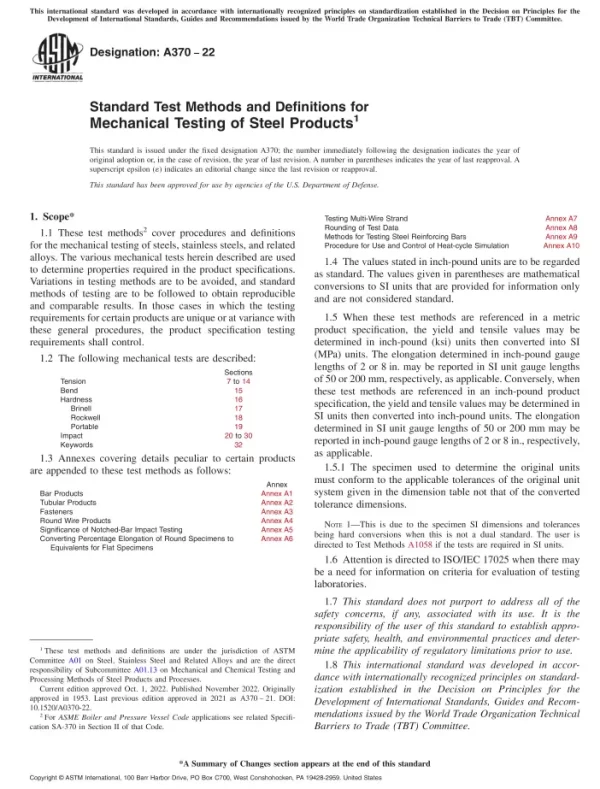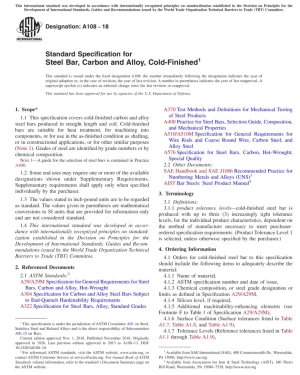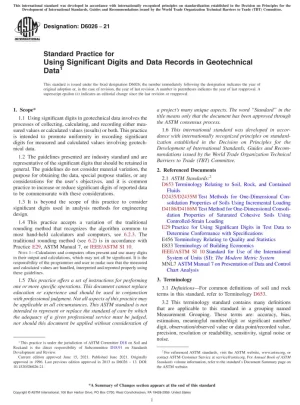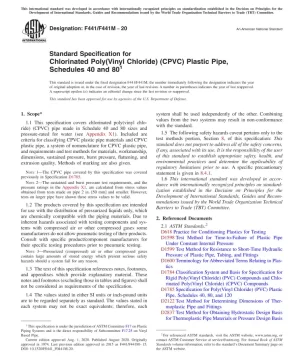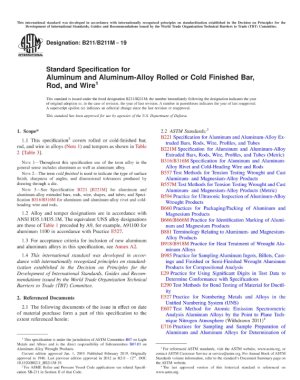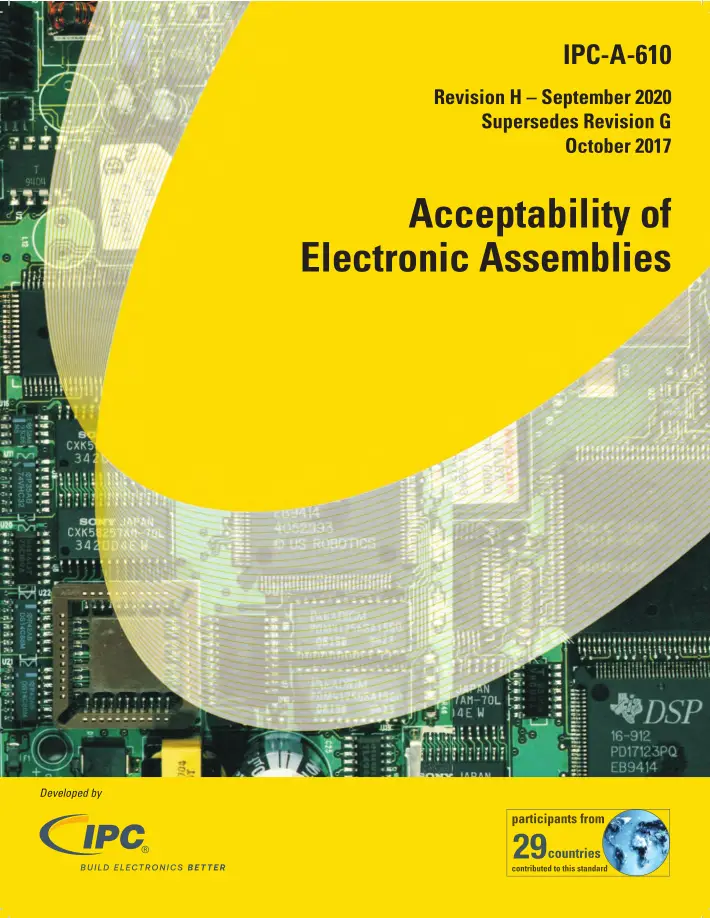ASTM A370, 2024 Edition – Standard Test Methods and Definitions for Mechanical Testing of Steel Products
1.1 These test methods cover procedures and definitions for the mechanical testing of steels, stainless steels, and related alloys. The various mechanical tests herein described are used to determine properties required in the product specifications. Variations in testing methods are to be avoided, and standard methods of testing are to be followed to obtain reproducible and comparable results. In those cases in which the testing requirements for certain products are unique or at variance with these general procedures, the product specification testing requirements shall control.
1.2 The following mechanical tests are described: Sections Tension 7 to 14 Bend 15 Hardness 16 Brinell 17 Rockwell 18 Portable 19 Impact 20 to 30 Keywords 32
1.3 Annexes covering details peculiar to certain products are appended to these test methods as follows: Annex Bar Products Annex A1 Tubular Products Annex A2 Fasteners Annex A3 Round Wire Products Annex A4 Significance of Notched-Bar Impact Testing Annex A5 Converting Percentage Elongation of Round Specimens to
Equivalents for Flat Specimens Annex A6 Testing Multi-Wire Strand Annex A7 Rounding of Test Data Annex A8 Methods for Testing Steel Reinforcing Bars Annex A9 Procedure for Use and Control of Heat-cycle Simulation Annex A10
1.4 The values stated in inch-pound units are to be regarded as standard. The values given in parentheses are mathematical conversions to SI units that are provided for information only and are not considered standard.
1.5 When these test methods are referenced in a metric product specification, the yield and tensile values may be determined in inch-pound (ksi) units then converted into SI (MPa) units. The elongation determined in inch-pound gauge lengths of 2 in. or 8 in. may be reported in SI unit gauge lengths of 50 mm or 200 mm, respectively, as applicable. Conversely, when these test methods are referenced in an inch-pound product specification, the yield and tensile values may be determined in SI units then converted into inch-pound units. The elongation determined in SI unit gauge lengths of 50 mm or 200 mm may be reported in inch-pound gauge lengths of 2 in. or 8 in., respectively, as applicable.
1.5.1 The specimen used to determine the original units must conform to the applicable tolerances of the original unit system given in the dimension table not that of the converted tolerance dimensions.
Note 1: This is due to the specimen SI dimensions and tolerances being hard conversions when this is not a dual standard. The user is directed to Test Methods A1058 if the tests are required in SI units.
1.6 Attention is directed to ISO/IEC 17025 when there may be a need for information on criteria for evaluation of testing laboratories.
1.7 This standard does not purport to address all of the safety concerns, if any, associated with its use. It is the responsibility of the user of this standard to establish appropriate safety, health, and environmental practices and determine the applicability of regulatory limitations prior to use.
1.8 This international standard was developed in accordance with internationally recognized principles on standardization established in the Decision on Principles for the Development of International Standards, Guides and Recommendations issued by the World Trade Organization Technical Barriers to Trade (TBT) Committee.
General Product Information:
| Revision |
2024 Edition |
| Document Type |
PDF |
| Document Language |
English |
| Pages |
51 |
| Publisher |
ASTM International (ASTM) |
| Status |
Current |
Preview
ASTM Volume
01.01: Steel–Piping, Tubing, Fittings
Featuring standards for steel pipe that requires high-temperature service, ordinary use, and other special applications, included are specifications on steel tubes for boiler and superheater tubes, general service tubes, still tubes in refinery service, heat exchanger and condenser tubes, mechanical tubing, and structural tubing. Steel casting specifications address standard properties for valves, flanges, fittings, and other pressure containing parts for high-temperature and low-temperature service.
01.02: Ferrous Castings; Ferroalloys
Volume 01.02 includes standards that describe the property requirements of steel castings used for general applications, structural purposes, and high-temperature and low-temperature service. It also features alloy-casting specifications for castings made of nickel and chromium alloys.
Other standards detail the property and testing requirements for gray and white iron castings, cast iron pipe and fittings, and ductile iron castings.
This volume also includes standards on radiographic examination of castings to be used with ASTM’s standard reference radiographs.
01.03: Steel–Plate, Sheet, Strip, Wire; Stainless Steel Bar
Under the heading of steel plate, sheet, and strip, this volume covers specifications that stress mechanical property requirements and applications. The majority of them have been adopted by the Department of Defense. Also featured are specifications that detail the properties of assorted types of steel wire and industrial sizing screens.
01.04: Steel–Structural, Reinforcing, Pressure Vessel, Railway
This volume features specifications that fix the requirements for various types of structural steel, such as high-strength, low-alloy, rolled steel floor plates, and carbon-silicon steel plates.
Some standards focus on plates and forgings used in boilers and pressure vessels, while others deal with steel for concrete reinforcement and prestressed concrete. This volume also includes specifications that set the properties for railway service rails and accessories.
01.05: Steel–Bars, Forgings, Bearing, Chain, Tool
Specifications and test methods examine the properties of various steel bars intended for specific or general applications. Standards focus on carbon and alloy steel axles, wrought carbon steel wheels, steel tires, and carbon and alloy steel forgings for railway use.
Volume 01.05 also provides standards for steel forgings and billets in assorted applications, such as pressure vessels, rotors, and general use. The remaining specifications cover steel chain, bearing steels, and tool steels.

